
So whether you’re advertising on the Google Ads or optimizing your pages to rank organically in the search engines, your objective is simple -- To attract visitors to your website who would turn to leads and customers.
As a business owner, shouldn't you use all the tools in your arsenal to achieve your aim? A common argument for most businesses is that both options can be too costly. But all things being equal, Google Ads cost more than SEO.
But what if I show you how to use both marketing channels effectively with a budget of just $500/month? This is what you'll learn as you go through this guide. Let's dive in.
1. Make The Best Use of Your PPC Data
Search engine optimization takes time before you get considerable results. But even with that, there's no guarantee of reaching your target audience.
If you rank high for the wrong keywords, you'll attract wrong visitors that have no intention of subscribing to your email list, buying your product, or working with you.
Likewise, if you rank high for a keyword that no one is searching for, then you get little or no traffic to your website.
Keywords research can help you to reduce this risk.
Better yet, getting feedback and questions from your target audience is even better. You can use tools like Answer The Public to find all the possible questions your audience is asking.
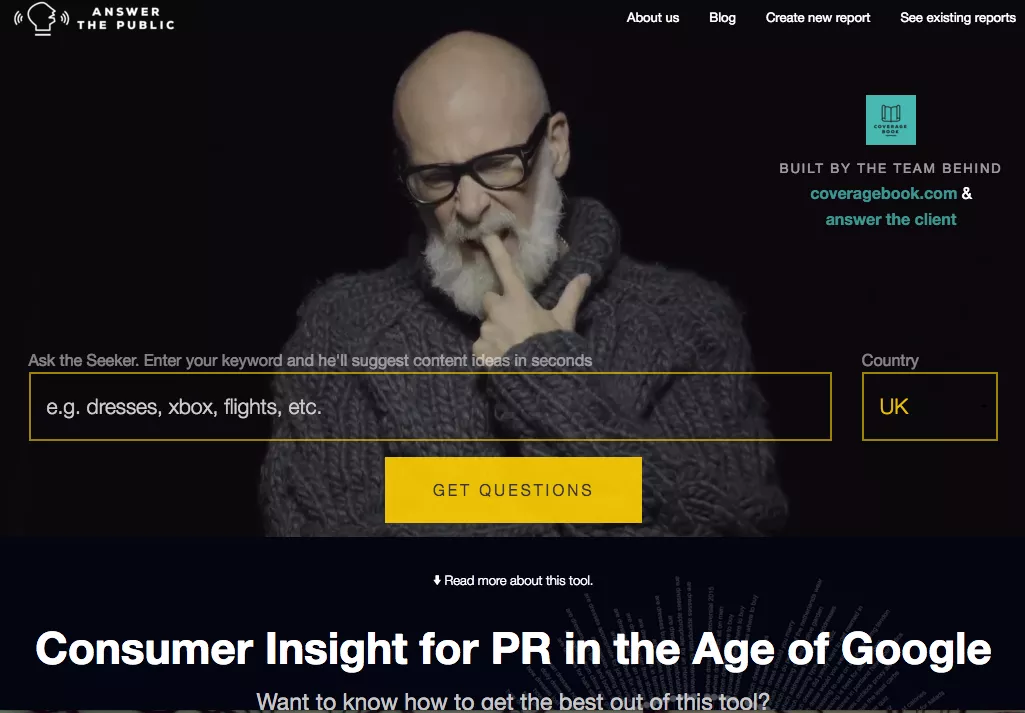
You’d find keywords that are similar to these if you want to rank for content marketing related terms:

With PPC ads, you can cut through the waste of time and get to know what search terms are popular with your potential customers.
How do you do that?
Pick search terms and perform keywords research to see if they’re viable terms based on their search volumes and competition.
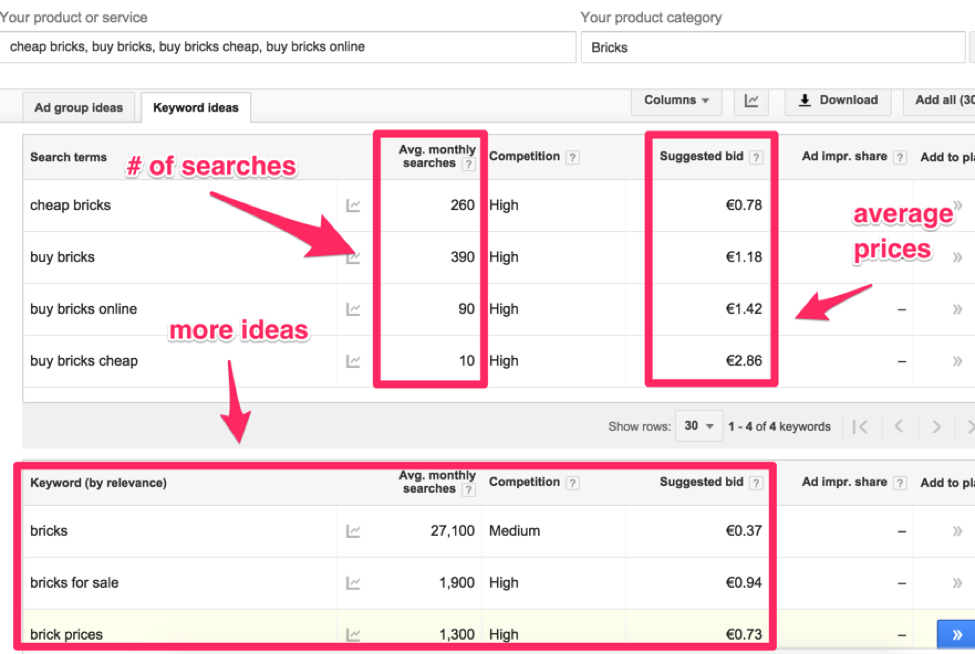
After this, bid for your preferred term and create your ad. This will include your page headline and meta description.
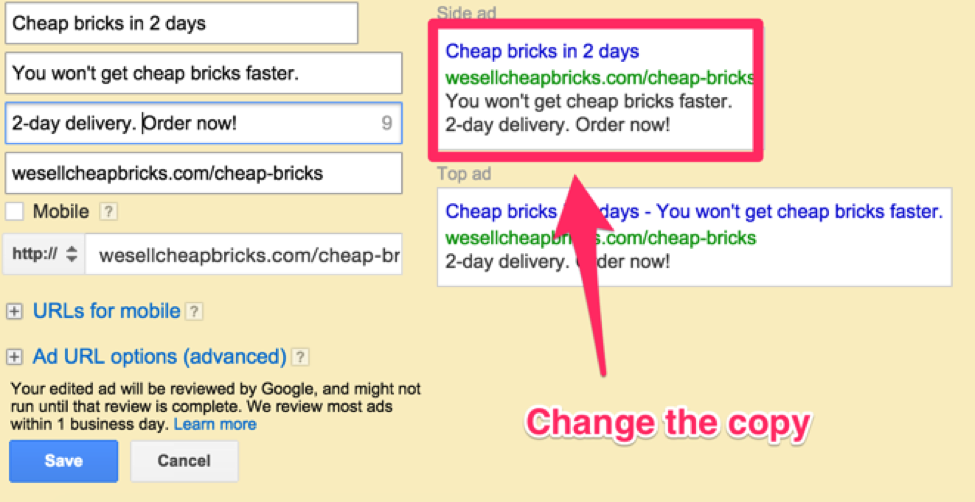
When you're through with this, you can start the ad.
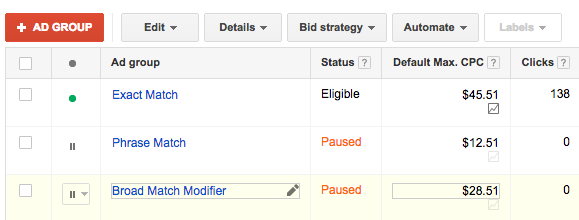
To get more accurate results, you can create another ad that's a variation of the first one. You can then track the performance of both ads to see the one with a better click-through rate and performance.

Another way is to use content network ads to see which ad content users click on the most. This shows you what's popular with your audience.
After getting these details from your PPC ads, you can now optimize your related pages for popular terms and also understand the type of headlines and meta descriptions that attract search engine users to click.
2. Set Shared Goals and Combined Metrics
Of course, your main aim of leveraging these two marketing channels is to bring in visitors who would become loyal customers.
But for them to turn from a visitor to a customer, they have to be engaged with your website.
Both PPC and SEO provide engagement metrics like the Average Session Duration, Bounce Rate, Pages per Session, etc.
So how do the two channels compare? To achieve more effective marketing results, you have to set shared goals.
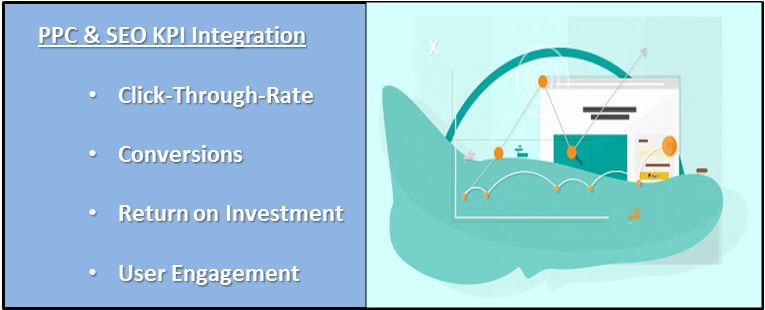
Added to that, you have to combine these metrics to have better insights into the effectiveness of your marketing efforts. Do you have better conversions with PPC or SEO?
If you have better conversions with a channel, you can investigate why and apply your findings to the other channel.
With this, you can use one channel to improve the other until you have two marketing channels working at optimum efficiency. This is an advantage you'll gain over a website using a single channel (e.g., Google Ads or SEO).
In some cases, running PPC combined with SEO may lead to a change in metrics if you used to run a single channel. For instance, Brad Geddes combined PPC and SEO for a website. What you'll see is that there was a drop in SEO clicks as a separate metric.
But as a combined metric, there was an overall increase in clicks and an additional profit of $7,395. Without combined metrics, it would have been difficult to see this improvement.

3. Use Remarketing to Bring Visitors Back to Your Website
Even with the best SEO efforts, not every visitor will become a customer right away. In fact, AdRoll found that only 2% of first-time visitors will make a purchase.
Does that mean you lose out on 98% of your visitors? No way. Not if you also use Google ads. This platform provides a vital feature called Remarketing.
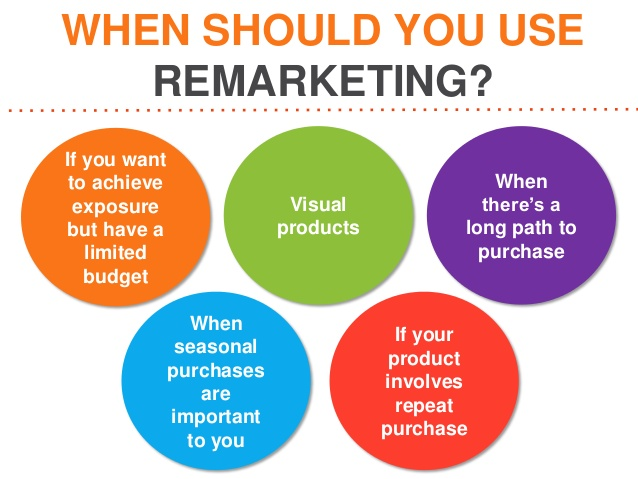
The aim of remarketing is to attract people who have visited your website in the past.
These people are more likely to engage with remarketing ads as they already have a knowledge of your brand. When you show up again with the right offer, they're more encouraged to respond to it or at least opt-in to your list.
A study shows that conversion rate increases as the number of ad impressions increases. In this case, SEO helps to attract visitors while PPC helps you to convert them.
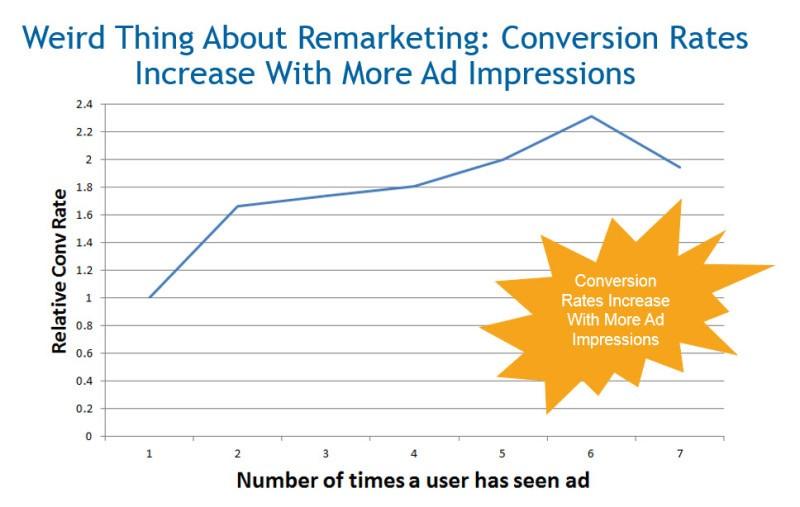
To create a remarketing ad, visit your Google Ads account and click on “Shared library.”

Google provides a lot of targeting options which helps you to keep your cost low as you're only presenting your ads to people who are likely to convert. You can target people who visit a specific page on your website that you think is close to conversion.
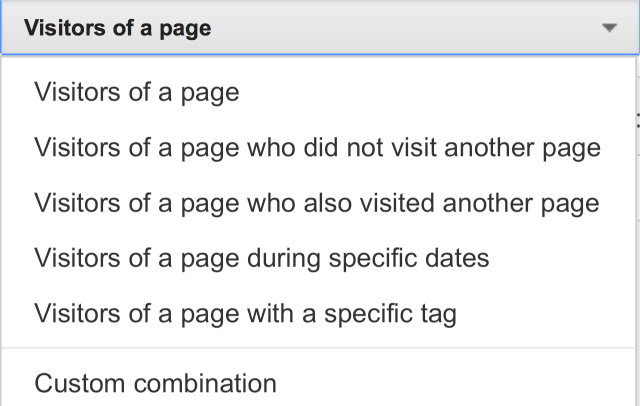
For instance, if a visitor leaves after reading a post that lists a product’s specifications and price, you can send an offer in your remarketing ad to bring them back. You can also target people who read about a specific topic.
For instance, this is a targeting setting that targets people who visit neilpatel.com and also pages containing “webinar.” This is an ad to market webinars to these visitors.

Through remarketing, WordStream increased its number of repeat visitors by 50%, conversion rate by 51%, and time on site by 300%.
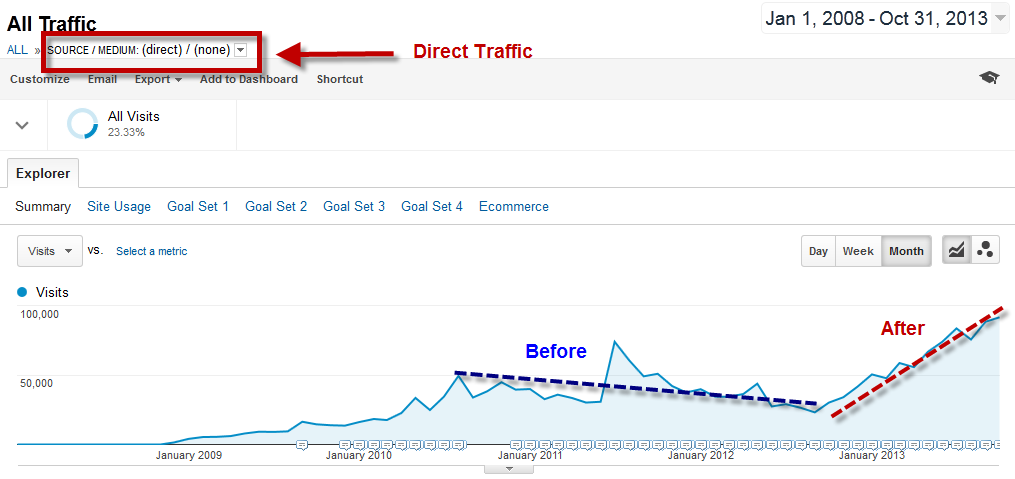
Remarketing can even be more effective with dynamic retargeting ads. If, for instance, someone visits your product page but failed to buy, you can send them ads of these products. With this type of remarketing campaign, Sierra Trading Post got a 5X increase in conversions.

4. Promote Your Resource Content Using Google Ads
Whatever channel of marketing you want to use, you need content to make it work. Therefore, content marketing is a component of any marketing channel you decide to use.
However, with content marketing, some pieces of content are more valuable to your business than others.
When you check the statistics on your website, some pages have performed far better than others. In many cases, this could have been validated through social shares.
Which content do your followers connect with on your social media platforms? Which pages perform well in organic search when it comes to conversions?
With the knowledge of your most important resources, you can boost these pages with Google Ads to attract more people to them.
In this case, you're spending your money to promote a page with a track record of conversions or other metrics you want.
5. Target Commercial-intent Keywords
If you want to sell a product or service, it's only a no-brainer to target people who want to buy the same product or service, right?. To do this, you have to target the keywords that a potential buyer will use in the search.
For instance, a keyword like “buy winter shoes Boston” shows more commercial intent than just “shoes.”
Targeting the wrong keywords means you'll usually attract the wrong visitors to your website. You may have heard of statistics that show that search engine users tend to click on organic search links rather than ads.
However, this depends on the type of keywords you're talking about. A study by WordStream revealed that search users using commercial-intent keywords tend to click more on ads. They found that 64.6% of clicks from commercial-intent keywords go to ads while 35.4% go to organic results.
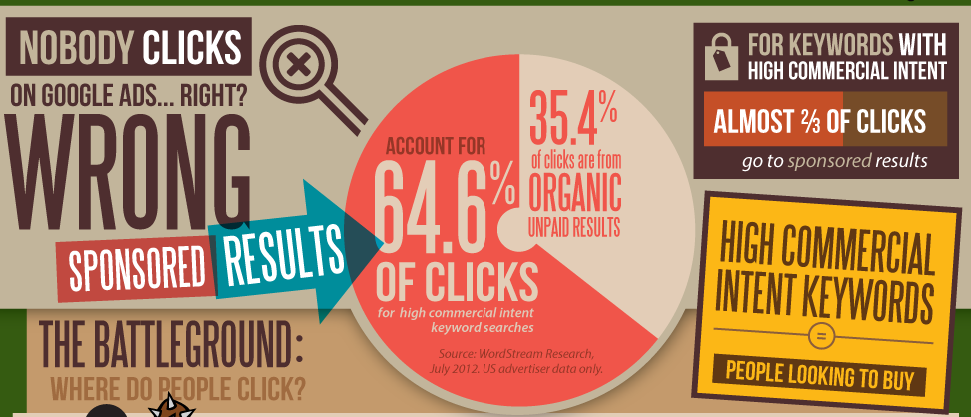
This shows you the need to combine both PPC and SEO to dominate keywords that show commercial intent for your business. Google also allows you to show your products in your ads which means users can click through directly to your sales page.

In most cases, it's easier to determine the intent of long-tail keywords than broad keywords and you can see that in the example I gave above. You can also input your keyword into Google Ads to see the suggested bid for the keywords.
High commercial-intent keywords usually have higher suggested bids. This can give you an insight into the keywords you should target for your SEO efforts.
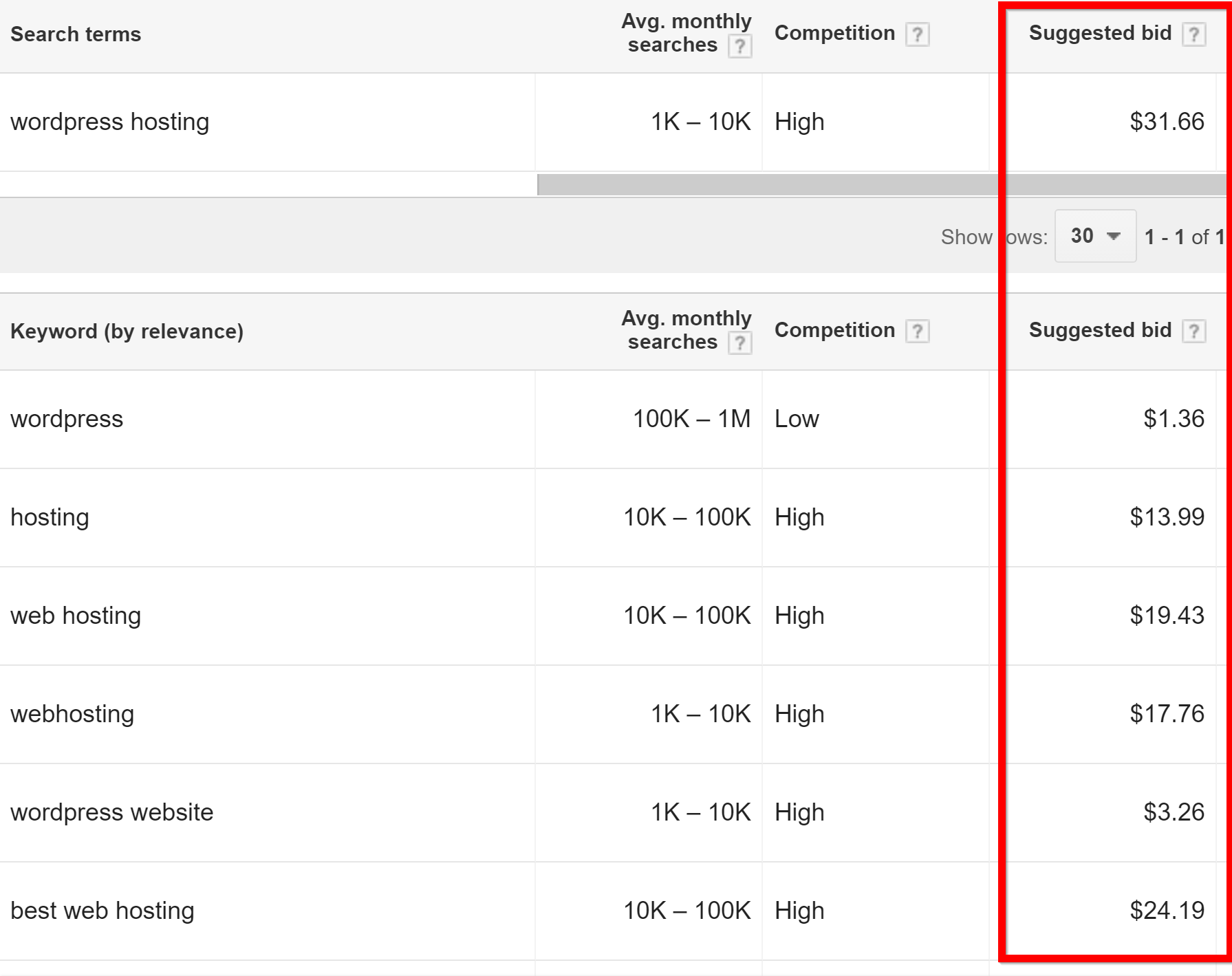
Another benefit of targeting long-tail terms is that there's a lower competition while bidding for them.
That means you'll spend less on your PPC ads while attracting visitors who are more likely to convert unlike the broad terms in the picture above.
You can compile a list of possible long-tail keywords that show the intent you want.
After this, you can put those keywords into keyword research tools to see the ones that potential customers are using. Apart from search volume, you can also see the level of competition for each keyword.
Conclusion
You don't have to make a decision on whether to use Google Ads or SEO when you can use both. The good part is that with a monthly budget of $500, you can kick-start your campaign -- knowing first hand what your target audience wants and sending the clicks to a high-converting sales funnel to increase conversions.
If this process sounds complicated or you need Bloominari, our San Diego Digital Marketing Agency to help you, reach us today.


